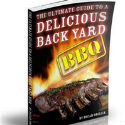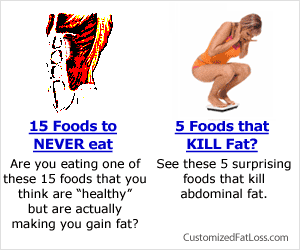How to Food Balance – Your Slimming Diet
When you undertake a slimming diet, it is of paramount importance to ensure that the food you eat are providing you with significant nourishment. If you consume a wide variety of foods from the food groups you should obtain optimum levels of each of the nutrients required for good health. Here we look at the primary food groups and how they relate to your diet and when trying to lose weight.
1. Starchy foods
Bread, potatoes, rice, cereals, pasta and other starches are staple foods in most people’s diet. Everything else revolves around them and contrary to popular belief, starchy foods are not fattening. Breads and cereals contain no more calories per gram and also have far less fats. Select breads which taste great without having to add jams and spreads. Eat Pasta and Rice with a tomato-based vegetable sources, avoiding adding any cheese, cream, butter or lots of oil.
2. Fruit, vegetables and salads
Always include a variety of fresh fruits and vegetables and salad leaves in your diet. Do not include too many dried fruit and avocados given dried fruit is higher in sugar and avocados are fairly high in fat. Avoid adding fatty salad dressings good examples are mayonnaise. Try to make your own salad dressings based on lime juice and low-fat yoghurts. Stay away from fried potatoes such as chips or baked potatoes with cheese sauces for example.
3. Milk, cheese and yoghurt
Ensure you keep to moderate amounts of low-fat dairy products and consume low-fat yoghurts. Low-fat cheeses, good examples are fromage frais, ricotta and cottage cheese are faverite and do not consume fatty milk shakes manufactured with whole milk.
4. Protein
Choose lean meats a good example is game, and make a point of trimming off all visible fat. Chicken with the skin removed, fish and pulses, lentils, split peas, and dried beans should be your preferred choices. Be sure to use steaming, grilling or baking rather than frying your foods. It is okay to eat nuts and seeds in moderation whilst avoiding high fat meat products such as sausages, pasties, pies and beef burgers.
5. Fatty and sugary foods
Try to use low-fat spreads wherever possible. Use oil during cooking sparingly, this applies to olive oil as well. The occasional sugary treat will do no harm to you, but just ensure you have them in moderation. Reducing the amount of fat in your diet is the best approach when you are dieting therefore avoid crisps, cakes, biscuits and pies as they contain a lot of hidden fats.
Jamie has been writing articles online several years and runs many websites. His latest IV Compatability Chart website which is a rich resource around drug compatablity is worth visiting. Pop along to http://www.ivmedicationcompatibilitychart.com/ and find out more.
Food And Exercise
Eating well can improve your workout and recovery. Whether training for your first half-marathon, heading outside for a vigorous walk, or leaving for a day of skiing, what you eat before and after your outing will play a role in how well you achieve your fitness goals. For a workout to be successful, it must include adequate nourishment to help pump up your exercise and burn belly fat along the way.
Fuel up before you start. Carbohydrates provide energy for your workout and works even better by combining them with a small amount of lean protein. For the morning it could be a whole wheat bagel with peanut butter or low-fat granola with low-fat yogurt. If you prefer to exercise in the evening look at a lean protein such as chicken, a whole grain like brown rice for the carbohydrate energy, and a salad or vegetable. Be sure to stay away from fatty foods that are harder to digest like carbonated beverages, which also cause bloating.
Trial and error will help determine how soon you can exercise after eating. It really depends on the individual where some people can eat 10 minutes before going for a long jog without any stomach discomfort and others can’t eat anything within two hours of running.
Whether you should eat while you’re exercising depends on how long you work out and at what intensity. If you’re exercising for more than an hour be sure to replace your glycogen stores (sugar stored in the muscles for energy) every 60 to 90 minutes. Some good choices to consider are energy bars, dried fruit, gels (a supplement found in sports stores and grocery stores), crackers, and sports drinks are good choices.
Hydration is important too. It’s a good idea to consume 14 to 22 ounces of water about two to three hours prior to exercising, even if you’re not thirsty. During exercise, how much you drink will depend on the intensity and duration of your workout. Some consideration should be taken into account for what level of exercise your preforming at. With moderate exercise probably a drink to quench your thirst. With a more intense workout think about drinking 6 to 12 ounces every 15 minutes. For those long and hard workouts when your actually losing weight a good general rule is to drink 16 to 24 ounces of fluid for every pound lost.
Food for the finish. Once you’re done exercising you need to think about helping your body to recover. We are back to using carbohydrates to restore glycogen and protein helps repair and work towards building muscle. Healthy post-workout snacks include chocolate milk, yogurt, fruit with string cheese, lean meat, or an English muffin with peanut butter.
For those who are exercising with the goal of shedding a few pounds giving up carbs entirely is not the best way to go. Your body actually needs carbohydrates at some level or your body will not function especially if you are a avid exerciser or competitor.
Everyone’s nutritional needs is different depending on the duration, intensity, and type of activity. Also, under consideration here as well are personal factors, such as age, gender, height, and weight. But everyone “” from the moderate exerciser to the hard-core athlete “” will benefit from eating well. Eat to pump up your exercising and burn that belly fat with time.
Visit our website for access to all additional product reviews at Fitness-Secrets-Center.
The Fitness-Secrets-Center focuses on providing our visitors a wealth of information concerning little known fitness secrets that are available at our site. We’ve pulled together thirty three products for visitors review comprising the best of the best Fitness Secrets and most highly purchased Ebook products out on the internet today. Our goal with this site is to provide our visitors the opportunity to be better informed of what options are available to them as they look to better their
Gluten Free Diet Food
South Beach Diet Phase:
The South Beach Diet is not a low-carb or a low-fat diet. The South Beach Diet means choosing the right carbs and the right fats to eat healthy and lose weight. The diet claims that one could lose anywhere between 8 and 13 pounds in the first 2 weeks. There are three phases in the South Beach Diet. South Beach Diet phase 1 lasts for 2 weeks, sufficient amounts of protein, good fats and carbs with the lowest glycemic index are allowed. One can have normal helpings six times a day, so as to not feel hungry. Lean cuts of beef, skinless poultry, all types of fish and shellfish, boiled ham, fat-free or low-fat cheese, peanuts, pecans, pistachios, eggs, artichokes, asparagus, beans and legumes, broccoli, cauliflower, celery, cucumbers, eggplant, lettuce, mushrooms, spinach, tomatoes, zucchini, canola and olive oils, all seasonings that contain no added sugar, broth, butter sprays, pepper, sweets (limit to 75 calories per day) are allowed in the first phase. In the South Beach Diet phase 2, the goal is to eat more carbs again while continuing to lose weight.In the South Beach Diet Phase 3 is the maintenance phase, how you are supposed to eat for the rest of your life.
Gluten Free Diet Food:
Gluten is a protein found in wheat, rye, barley and oats that give the dough its tough, elastic character. Agluten-free diet eliminates all wheat, rye, barley and oat gluten from the diet, as a form of treatment for gluten-sensitive enteropathy (celiac disease). Thus most grain, pasta, cereal and processed foods must be avoided. People can also buy gluten-free products. Hidden sources of gluten include additives, preservatives, and stabilizers found in processed food, medicines, and mouthwash. The gluten free diet food is a lifetime requirement, though some people with celiac disease, also known as gluten intolerance do not improve on the gluten-free diet. Use corn, rice, soy, arrowroot, tapioca, and potato flours or a mixture instead of wheat flour in recipes. Buy plain, frozen, or canned vegetables and season with herbs, spices, or sauces made with allowed ingredients. Other gluten-free diet foods that are allowed are all meat, poultry, fish, and shellfish, eggs, dry peas and beans, nuts, peanut butter, soybean, cold cuts, frankfurters, or sausage without fillers. Malted milk, some milk drinks, flavored or frozen yogurt should be omitted from the diet. Avoid sauces, gravies, canned fish and other products with HVP/HPP made from wheat protein.
gift | food | relationship | pregnancy | makeup | girl friend | boy friend | milk | vegetables | cleaning | Leadership | Actor | Bathroom colors | Flooring |






-SMALL.gif)
